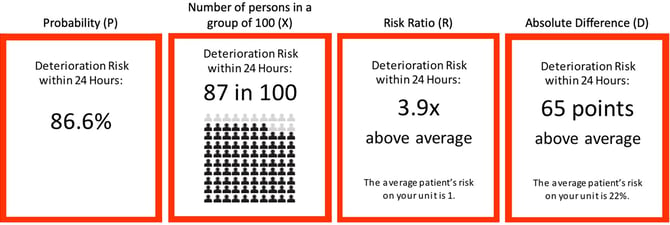♾️ Data-centric AI and What information format assists nurses' decision making?
18th January 2024
Kevin Sam
2 min read
Hiya 👋
We’re back with another edition of the digital pharmacist digest!
Here are this week's links that are worth your time.
Thanks for reading,
Kevin
👓 Currently Reading: Feel-Good Productivity: How to Do More of What Matters to You by Ali Abdaal
📖 What I'm reading
Inpatient nurses’ preferences and decisions with risk information visualization
🩺💻 Health informatics & 📈 Data
"We examined the influence of 4 different risk information formats on inpatient nurses’ preferences and decisions with an acute clinical deterioration decision-support system...
We conducted a comparative usability evaluation in which participants provided responses to multiple user interface options in a simulated setting. We collected qualitative data using think aloud methods. We collected quantitative data by asking participants which action they would perform after each time point in 3 different patient scenarios...
We encourage those developing risk-based systems for inpatient nurses to consider expressing risk in a probability format and include a graph (with average line) to display the patient’s recent trends."
What’s next for AI in 2024
🤖 Artificial Intelligence & 📈 Data
The article predicts four trends for AI in the coming year.
1. Customized chatbots: Google and OpenAI are developing web-based tools that allow anyone to customize powerful language models and make their own mini chatbots that cater to their specific needs.
2. Generative AI's second wave will be video: Generative models that can produce realistic videos from text are improving rapidly and being used for filmmaking, marketing, and special effects.
3. AI-generated election disinformation: As more people use generative AI to create fake images, videos, and memes, the risk of political manipulation and misinformation increases.
4. Robots that multitask: Roboticists are building robots that can learn from trial and error and perform a wider range of tasks, inspired by the success of large, multimodal models in AI.
Data-Centric AI Whitepaper
🤖 Artificial Intelligence & 📈 Data
"The majority of AI developers in the past have focused their efforts on continuously iterating and improving the code or algorithm of their models. This approach is known as model-centric AI and has resulted in significant progress in machine learning (ML) systems. However, recently there has been a shift in perspective among AI experts toward data-centric AI (Zha D. et al, 2023). Data-centric AI is defined as “the discipline of systematically engineering data used to build an AI system” and is an approach that revolves around the idea that data is not just a resource but the very core of AI systems (Iyengar, 2023)...
The approach has emerged from the theory that current algorithms are capable enough to tackle most problems associated with AI and that the focus should now switch to the data part of the equation (Graca, 2023). In other words, it advocates a fundamental shift from model advancements (model-centric AI) to ensuring data quality and reliability (data-centric AI) (Zha D. et al, 2023)...
Data-centric AI focuses on cleaning, cleansing, pre-processing, balancing and augmentation of data when building and testing AI systems....
In many industries where giant data sets simply don’t exist, I think the focus has to shift from big data to good data. Having 50 thoughtfully engineered examples can be sufficient to explain to the neural network (a type of AI model) what you want it to learn.”
Are you enjoying this digest? It would mean a lot if you'd consider forwarding it on to someone that you think would also appreciate it!
Stay up-to-date with the Digital Pharmacist Digest
Any comments provided are personal in nature and do not represent the views of any employer


